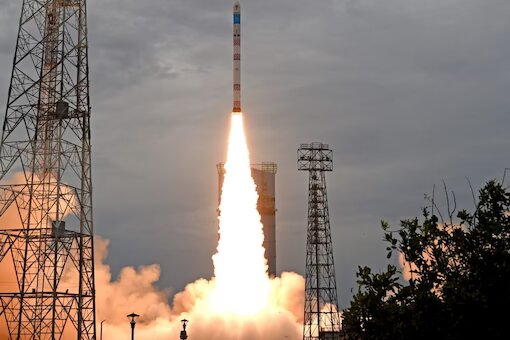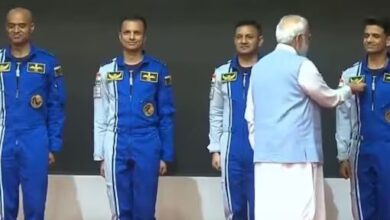
- ISRO says that during the Chandrayaan-3 lander EMI/EC test, launcher compatibility, antenna polarisation of all RF systems
- ISRO plans to send the spacecraft into space in June. Launch Vehicle Mark 3 (LVM3) will send it into space from the Satish Dhawan Space Centre in Sriharikota (Andhra Pradesh).
The Indian Space Research Organisation says that the flight acceptance hot test of the CE-20 cryogenic engine was successful. This engine will power the cryogenic upper stage of the launch vehicle for the Chandrayaan-3 mission.
The hot test was done for 25 seconds at the High Altitude Test Facility of the ISRO Propulsion Complex in Mahendragiri, Tamil Nadu, on February 24. The national space agency in Bengaluru said that the test was done at the High Altitude Test Facility of the ISRO Propulsion Complex.
“During the test, all the propulsion parameters were found to be satisfactory and close to what was expected,” an ISRO statement said on Monday.
ISRO said that the fully integrated flight cryogenic stage will be made up of the cryogenic engine, the propellant tanks, the stage structures, and the fluid lines that connect them.
The Chandrayaan-3 lander passed the EMI/EMC test at the U R Rao Satellite Centre earlier this year.
For satellite missions, an EMI-EMC (Electro-Magnetic Interference/Electro-Magnetic Compatibility) test is done to make sure that the satellite subsystems work in space and are compatible with the expected electromagnetic levels.
ISRO said that this test was a big step towards making the satellites real.
The main parts of the Chandrayaan-3 interplanetary mission are the propulsion module, the lander module, and the rover. Due to the difficulty of the mission, radio frequency (RF) links must be set up between the modules.
ISRO says that during the Chandrayaan-3 lander EMI/EC test, launcher compatibility, antenna polarisation of all RF systems, standalone auto compatibility tests for the orbital and powered descent mission phases, and lander and rover compatibility tests for the post-landing mission phase were all checked.
Chandrayaan-3 is the next mission after Chandrayaan-2. It will show how safe it is to land and move around on the moon’s surface from start to finish. ISRO plans to send the spacecraft into space in June. Launch Vehicle Mark 3 (LVM3) will send it into space from the Satish Dhawan Space Centre in Sriharikota (Andhra Pradesh).
The propulsion module will move the lander and rover until they are 100 km above the moon’s surface. The Spectro-polarimetry of Habitable Planet Earth (SHAPE) payload is on the propulsion module. It will measure the spectral and polarimetric properties of Earth from the lunar orbit.







Facebook Comments